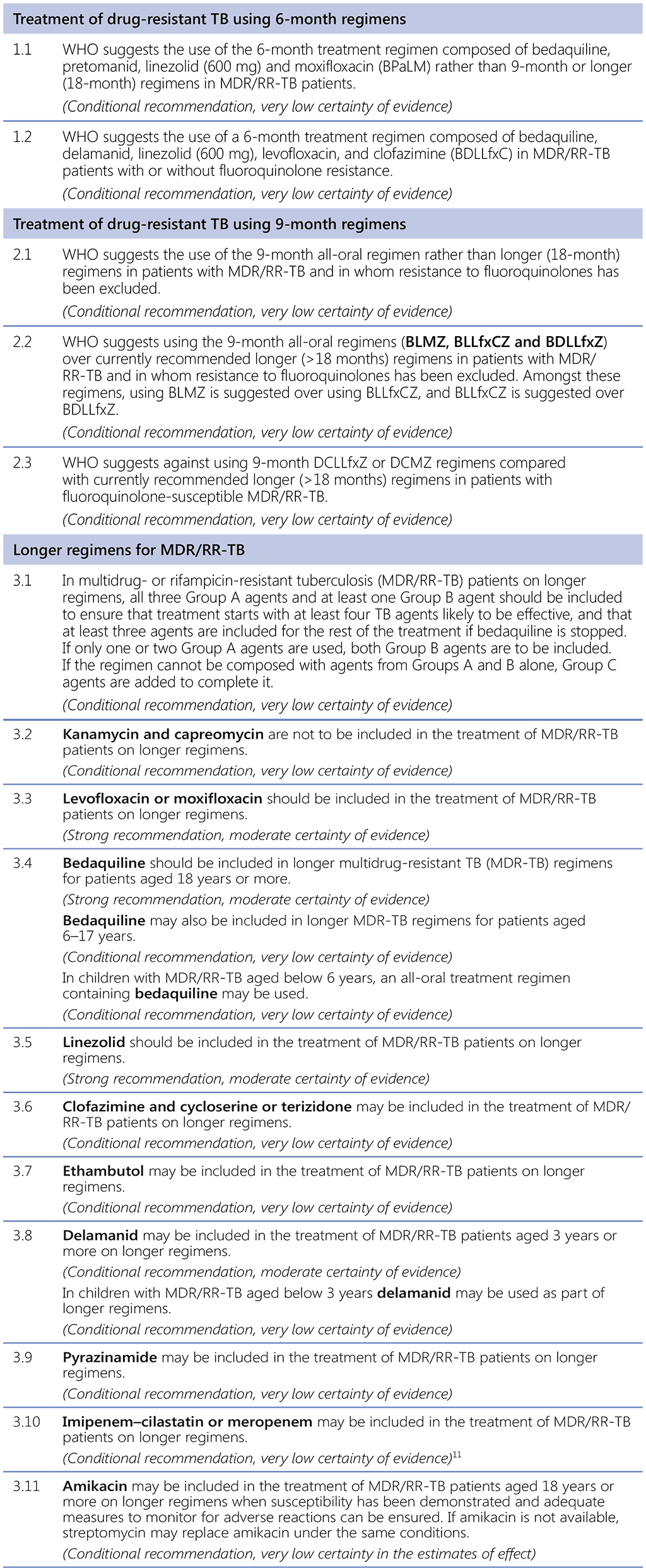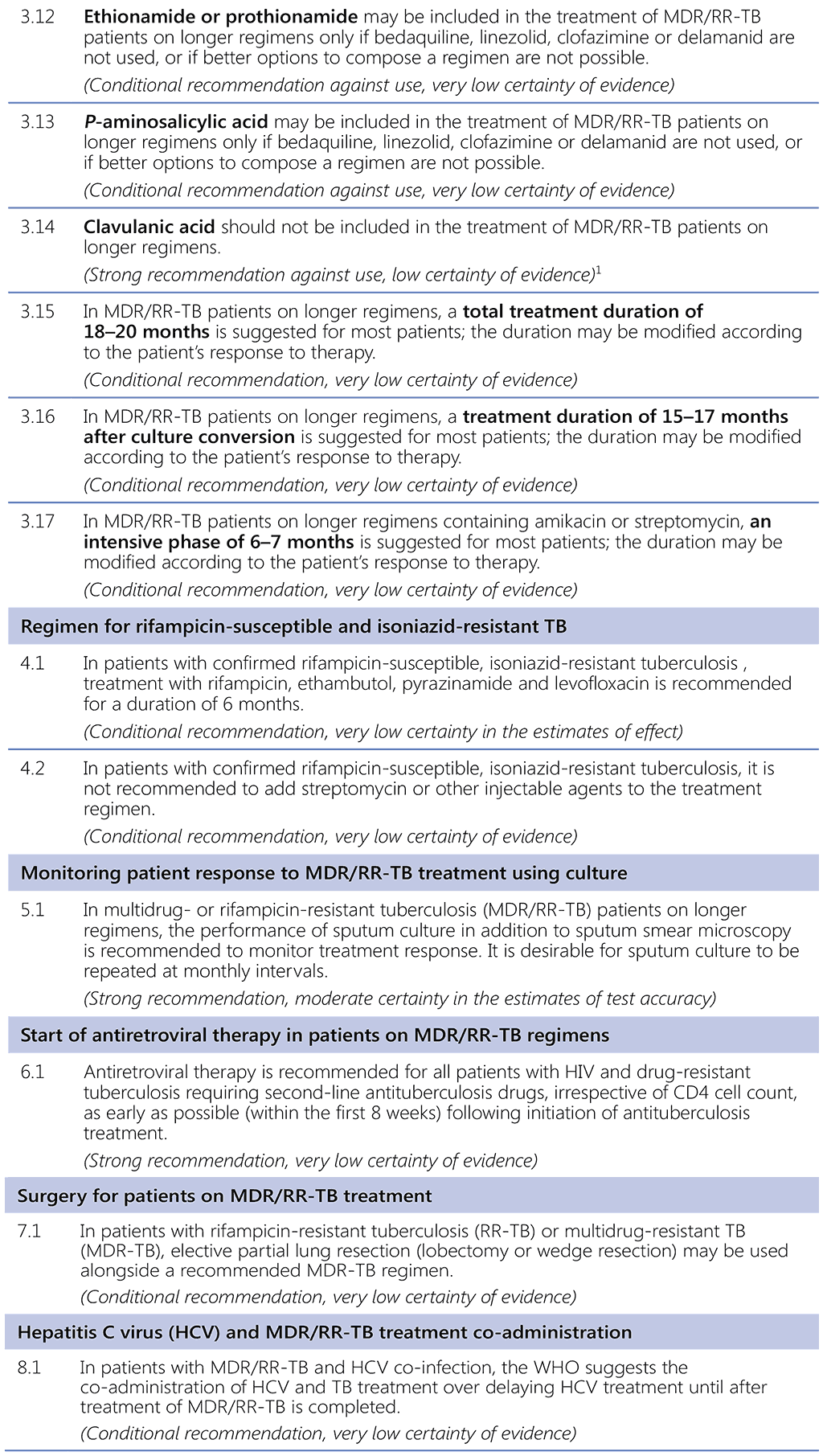8. Adjuncts to DR-TB treatment and comorbidities
8.1 Surgery in the treatment of MDR/XDR-TB
Surgery has been employed in the treatment of TB since before the advent of chemotherapy. With the challenging prospect that more cases of MDR/XDR-TB are virtually untreatable with all available drugs or risk having serious sequelae, there has been re-evaluation of the role of pulmonary surgery as a way to reduce the amount of lung tissue with intractable pathology and to reduce the bacterial load.

 Feedback
Feedback

